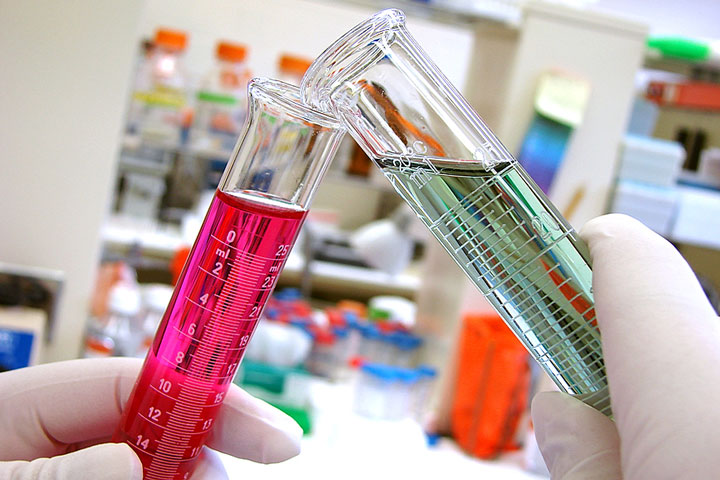Iran’s annual import of drugs and pharmaceutical products currently stands at nearly $1 billion, said the head of Iranian Pharmaceutical Importers Association, Nasser Riahi, ISNA reported.
“Iran’s pharmaceuticals market, comprising of both imported and manufactured drugs, is worth more than 80 trillion rial (US$2.35 billion at market exchange rates) a year,” said Riahi, noting that the majority of imported drugs are either high-tech medicine prescribed for certain diseases such as cancer or drugs whose domestically produced generic equivalents are in short supply or of lower quality.
Riahi believes limiting pharmaceutical imports, as suggested by Iran’s Food and Drug Organization (FDA) in its latest announcements, could harm the pharmaceutical industry by reducing competition, encouraging smuggling and threatening the well-being of patients.
This is while FDA appears to have focused its policies on reducing pharmaceutical imports and boosting the level of exports in the coming years.
Last month, Iran’s deputy health minister and the head of Food and Drug Organization, Rasoul Dinarvand announced plans by FDA to reduce the level of pharmaceutical imports to $800 million in the coming year, according to a report by IRNA.
In a separate remark, he also mentioned a plan by FDA to boost the level of pharmaceutical exports to $500 million per year, “from the current $150-$160 million, over the next three years,” FDA’s website reported.
Challenges
The FDA’s plans to increase pharmaceutical exports come as members of Iran’s parliamentary health committee and experts in various organizations have repeatedly warned that Iran’s pharmaceutical industry lacks the necessary means to develop new medicines or improve the quality of domestically manufactured drugs.
Lack of modern technologies and equipment, insufficient fund for research and development, outdated formulation and drug storage and delivery systems are viewed as the main challenges faced by the Iranian pharmaceutical industry, according to a report by Persian daily Ta’adaol newspaper.
More than any other industry, the pharmaceutical sector is highly dependent on its research and development segment. The top pharmaceutical companies invest up to 25 percent of their revenues in R&D measures.
According to Statista —the world’s largest statistics portal— the pharmaceutical industry spent $137 billion on research and development in 2013. The United States accounted for 34% of the global research and development spending, while Asia and Europe accounted for 38.8% and 22.4% respectively, with 5.3% contributed by the remaining countries. This is while Iran’s share in the total R&D spending was only about 0.5%, based on the report.
Although local companies are able to produce small molecule medicines for the domestic market, the national health system depends on imports for raw materials and many specialized drugs. Departure of international pharmaceutical companies following the 1979 Islamic Revolution limited the access of the local pharmaceutical industry to both new technology and raw materials.
An Overview of Iran’s Pharmaceutical
As Dinarvand explained, while the pharmaceutical industry in Iran was launched nearly 80 years ago, the first company was established almost 70 years ago in 1946, and the first license for pharmaceutical production was issued in 1956.
Following the 1979 Islamic Revolution, Iran’s pharmaceutical industry developed in a number of stages, said Dinarvand, elaborating that the first stage occurred during the Iran-Iraq war (1980-1988) when the large multinational pharmaceutical companies were transferred to the National Iranian Industries Organization (formerly National Industries Organization of Iran). A number of large cmpanies were established during this period, which are still among the largest.
The second stage was when the government handed over some companies to private and semi-governmental companies such as the Social Security Organization (SSO) and the banks’ investment companies as part of the country’s privatization policies. Meanwhile in this period, private companies were established and the production of raw materials began for the first time in the country.
According to Dinarvand, the third and very important development stage in the industry was manufacturing biological pharmaceuticals using modern biotechnology methods by science-based Iranian companies in recent years.
The Next Big Step
“This stage was followed by establishment of a large number of companies with huge investments from the private, government and semi-government companies in the industry,” said Dinarvand, adding: “The final stage, which is currently on top of FDA’s agenda, is to go beyond the domestic markets by boosting the level of exports.”
“Achieving this target requires major reforms. The industry is one of the most profitable industries in the world and required huge investments in research and development.”
After the revolution, Iran adopted a full generic-based medicine policy and prioritized local production of medicines. A formulation based national industry focused on self-sufficiency is one of the main goals of Iran’s medicine policy. The policy is mainly based on generic medicines, in which all medicines are only registered by their generic identity.
As a result of the generic-based policy, the government took ownership of many private companies and the import of foreign brands of medicine was restricted. Iran has a strong regulatory environment on the import of drugs and pharmaceuticals.
The current deficiencies in the pharmaceutical market are rooted in a number of facts: lack of funding for research and development, outdated equipment, smuggling and the imposed sanctions, to name a few.
In the meantime, as the head of Iranian Pharmaceutical Importers Association, Nasser Riahi pointed out, imposing too much restriction on the import of medicine can increase drug smuggling and create more suffering for the patients.
It remains to be seen whether the new FDA plans can help boost the pharmaceutical industry and attract more investments towards research and development.


